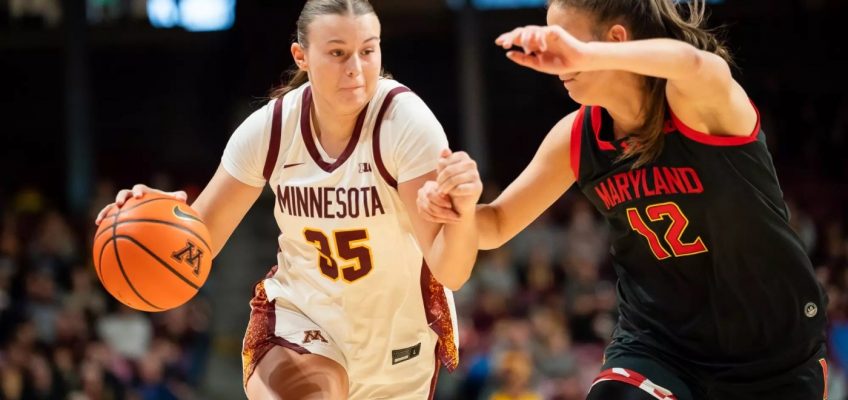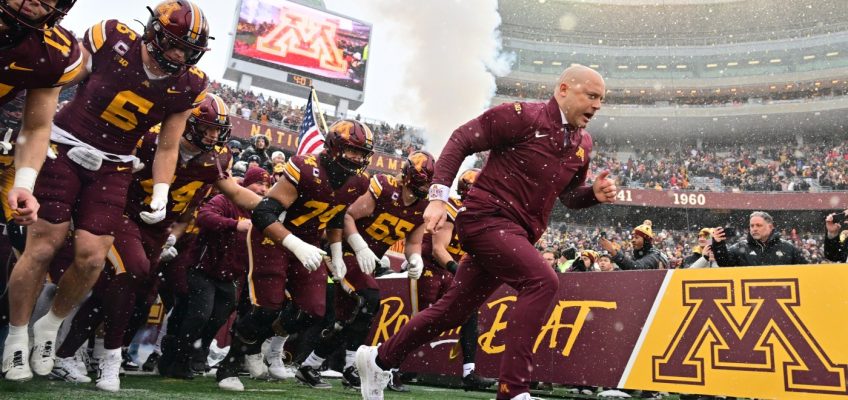MINNEAPOLIS — Saylor Poffenbarger had 30 points and 10 rebounds, and No. 7 Maryland scored 10 straight points with less than a minute remaining in double overtime to beat Minnesota 100-99 on Sunday.
Oluchi Okananwa had 25 points and eight rebounds for the Terrapins (11-0, 1-0 in the Big Ten), who trailed 99-90 with less than a minute to play in the second overtime.
Poffenbarger hit two free throws, and then the Gophers turned it over on the in-bounds pass twice in a row. Steals by Kyndal Walker and Okananwa resulted in three-point plays for each, cutting Minnesota’s lead to one with 35 seconds to play. Poffenbarger completed the comeback with a layup off an in-bounds play with 10 seconds remaining.
Grace Grocholski made nine 3-pointers and scored 31, and Amaya Battle completed a three-point play — her first points of the game — to tie the score 70-70 and send the game to the first overtime. The (6-3, 0-1) had a chance to win it in regulation, but Grocholski could only manage an awkward shot before the clock expired.
Maryland trailed by five late in the first overtime, but Yarden Garzon hit a 3-pointer and — after a Minnesota turnover on the in-bounds pass — made a driving layup with six seconds left before Tori McKinney missed a 3-point attempt as time expired.
McKinney finished with19 points, Mara Braun scored 16 and Battle finished with 13 points, 12 rebounds, seven assists and seven turnovers for Minnesota.
Minnesota finished the first half with an 18-2 run to take a 38-24 lead at halftime. Grocholski hit back-to-back 3-pointers, and Braun had five points during the run, which helped Minnesota overcome a 15-14 deficit after the game’s first 10 minutes. The Gophers haven’t beaten a Top 10 team since beating Maryland in 2018.
The Terrapins turned it around in the third quarter, as Addi Mack had three quick buckets and Isimenme Ozzy-Momodu scored five points to pull Maryland to within four at 48-44 through three. Maryland’s defense held Minnesota to 2-for-17 shooting and forced six turnovers in the third quarter.
Related Articles
Gophers football: P.J. Fleck shares why he fired U’s defensive line coach
Gophers football: New Mexico will be a challenge in the Rate Bowl
Gophers volleyball sweeps Iowa State in NCAAs to move into Sweet 16
River Falls rolls past St. John’s into Division III football quarterfinals
Gophers volleyball: Minnesota sprints to second round of NCAA Tournament




